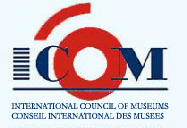 |
|
|||
|
What You never Asked for and Surely Will Adore - A Museum for Broken Relationships ICME Conference, Zagreb, Croatia, 14th to 16th October 2014 The museum of Broken Relationships is a private museum, the only private museum in Zagreb, receiving about 40 000 visitors every year. The museum exhibition triggers the curiosity of museums professionals as well as the general visitor. Yes, the visit to this museum made an immediate and lasting impression on me – and as a museums worker engaged in diversity projects and public programming, I also became very interested in the why and how behind this engaging and curious museums concept. In the introduction text on the wall it says – plainly ”…. Whatever the motivation for donating personal belongings – be it sheer exhibitionism, therapeutic relief or simple curiosity – people embrace the idea of exhibiting their love legacy as a sort of ritual,…” Situated in the picturesque old town in Zagreb, an ingenious and modern museum welcomes us all to partake in the process of building the exhibition consisting of various stories from real life. Objects and stories from broken relationships are on exhibit. In a well-organized exhibition of altogether 100 objects of a great variety are on display. The basic idea was conceived when the couple Drazen Grubisic and Olinka Vistica, was in the process of braking up and they would not agree on who was to keep the toy bunny that had accompanied one of them, if one part of the couple was on a journey alone, on these journeys the bunny represented the absent partner. The art project they created out of this personal story was at first an exhibition where they invited other friends to share objects from broken relationships, and later because of its popularity, the collection that was developed grew into the museum. “The first room is about casual or long-distance relationships that didn't work out, which includes a collection of airsickness bags: - …. I think I still have those illustrated safety instructions as well, showing what to do when the airplane begins to fall apart, the accompanying note reads: I have never found any instructions on what to do when a relationship begins to fall apart, but at least I've still got these bags." 1 The concept itself: The Museum of Broken relationships, responds in many ways to many of the challenges we are working to meet in contemporary museum exhibitions and public programming projects; inclusion, co-curating, reflecting diversity, community engagement, personal touch, emotional stories. These qualities we strive to fulfill to surprise and be relevant to the audience at the same time. The contemporary museum is expected to engage the audience and display objects with an agency that triggers reactions and somehow evoke emotions and associations, memories of past times, and nurture the feeling of identification. Objects from a broken relationship – accompanied by a short story, humorous, sad, sentimental or touching is a machine for evoking feelings – and it works. No one visits the museum of broken relationships without being touched by the exhibition. Why is this such a success? It reaches something in everyone, and the memory of failures and struggles in life is very easily accessed and most of us will find it easy to identify with these or some of these stories. The exhibition connects people and constitutes easy points of departure for conversations and gives a certain quality to communication. This is a simple concept – objects and stories, still it is not a regular museum it not easily describes into a certain category, it is both an artproject project and a museum. Ethics and truth How is the ethical dimension taken care of when displaying private stories , inviting and inspiring people to share their most intimate experiences, relations – maybe involving third parties that were not asked? The stories and the objects are presented in such a way that only the very few people actually involved will recognize most of the stories, they are anonymous. How about the truth and the authenticity that museums take pride in possessing; the fact that museums got the real objects? Surprisingly this aspect is explained in the exhibition text as being of less importance – whether fact or fiction the stories are interesting and useful. The Rhythm of breakups It is all in in the composition, the rhythm in how the exhibition is organized and curated. It is easy to grasp why this is a success, why you now may visit satellites of The Museum of Broken Relationships in Amsterdam and Brussels, and who knows, we are all invited to contribute to the collections of the stories of broken relationships, most of us possess one or several. If you do not want to share your own – your attention to someone else’s story might give the energy to move the world a small step in the direction of becoming a better place with greater understanding between fellow humans. And, expressed from an idealistic point of view – this is a great part of what we want the museum to be about. 1 This quote is from an article about the museum, Sean Carberry 2013; A History of Love Gone Wrong, All in One Croatian Museum |
|
|
|
|
| ▲ til toppen Tilbake til reiserapporter 2014 |